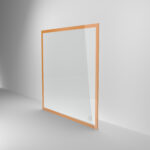It’s important to know the pros and disadvantages of tempered laminated glasses. There is no difference in the quality of tempered, heat-strengthened, or annealed glass, as long as the laminated glass is cracked, it will hold. This roll wave distortion may be seen in even the flattest tempered glass when bonded together. There you need to know about the laminated glass vs tempered glass choices.

Best Glass with Accuracy
You are absolutely accurate in saying that laminated glass may be used as safety glass regardless of the kind of glass used in the lamination. Regardless of the kind of glass used, heat-treated or annealed glass will still attach to the interlayer when it breaks. On the other hand, the immediate safety effect that you obtain when using separate pieces of shatter-proof tempered glass is lost when laminated glass is made from tempered glass.

Choices You Can Make
To put it another way, the benefits that come from using tempered laminated glass outweigh the disadvantages of annealed glass when comparing the two. As an added bonus, it’s significantly more durable than annealed glass. For the most part, it’s around four to five times more powerful than typical this enables you to inject the laminate material with a significant amount of strength.

For a wide range of purposes, this may be a useful tool
The tempered laminated glass is often used in combination with many layers of a structural interlayer to offer additional strength in hurricane-resistant windows, for example. Using this technique, you can create a laminate that is very robust and resistant to the kinds of pressures that are common in extreme environments. Balustrade glazing and other applications requiring added strength or the ability to utilise thinner glass instead of thick annealed glass are examples of more common use cases for this kind of product. There are several benefits for choosing thinner glass, such as reduced shipping costs and easier installation when the laminate is lighter.
For these reasons, tempered glass was preferred over other forms of glass when making laminated glass. Tempered glass, on the other hand, is more resistant to scratching than normal glass. Its unique qualities make it a very feasible solution in a variety of various applications, even when used as laminated glass.After cutting the annealed glass, it may be tempered.

To what extent is it possible to begin with tempered glass and subsequently convert it back?
Please let me know whether this is possible and how much it would cost.It’s a good thing that annealing tempered glass is possible. When using tempered glass, it’s critical to get the temperature up to a point where the stresses in the material are released. According to actual experience, the glass must be heated to between 500 and 600 degrees Fahrenheit before being properly cooled.
To anneal glass, the technique you choose depends on how much stress you want to put on the material. In order to anneal the glass down from 80 MPa to roughly 30 MPa, you may just need to heat it to 500 degrees for 10–30 minutes.

Conclusion
The technique determines what sort of equipment you may utilise. A heat soak furnace may be a decent choice if all you’re seeking is a stress reduction of 30 MPa or less. In order to accomplish even higher stress reduction, on the other hand, specialised equipment is necessary.



